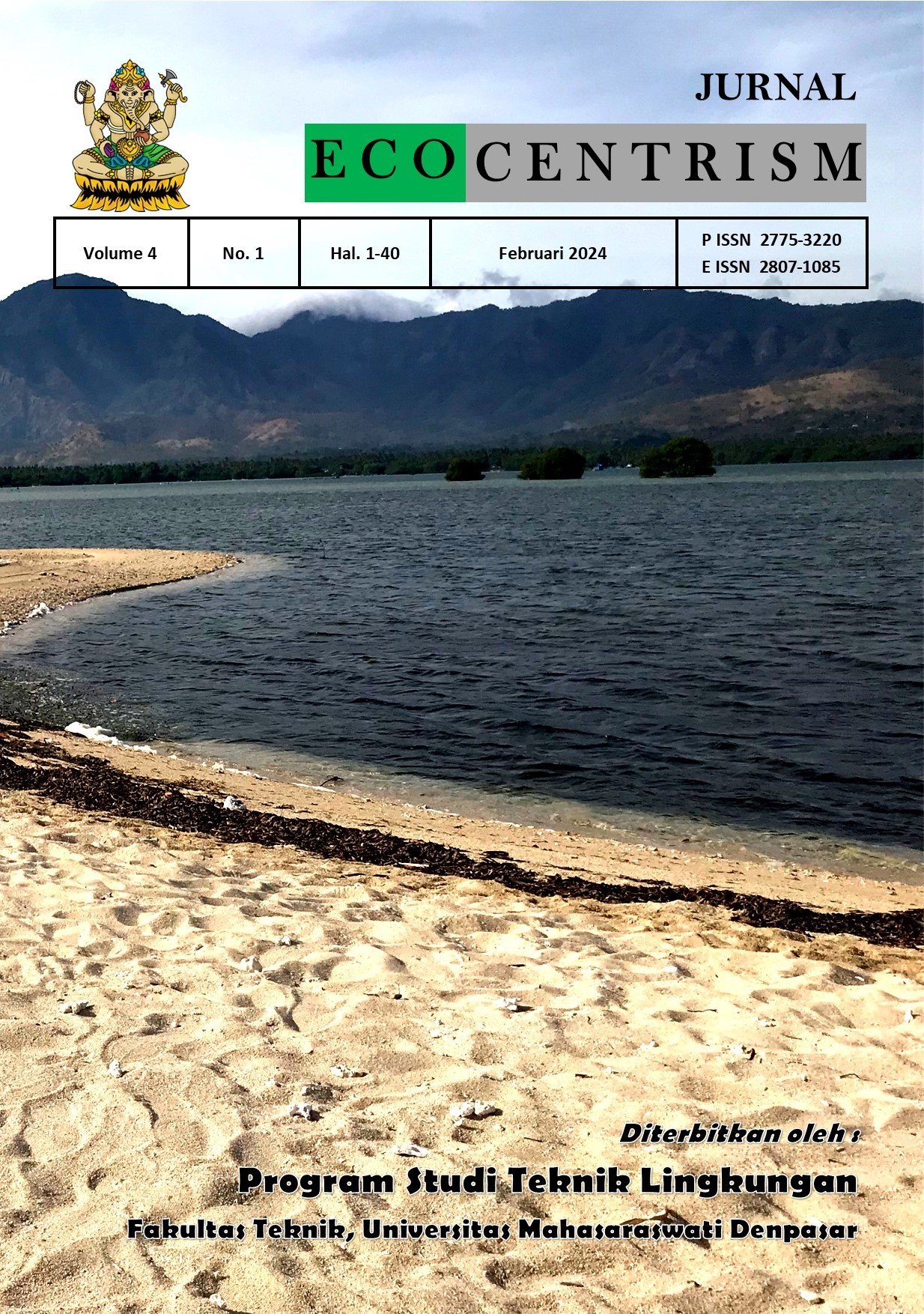LIMBAH LUMPUR INDUSTRI PENGOLAHAN BAJA SEBAGAI PENGGANTI PARSIAL PASIR UNTUK BAHAN BANGUNAN
Keywords:
Steel Industry, Sludge Waste, Solidification, Concrete, Permeability, Compressive Strength, LeachingAbstract
This research involves the binding/solidification of sludge waste from the steel processing industry originating from a steel industry in West Java, namely sludge waste from the waste processing process of the iron sponge production unit (direct reduction plant) and the wire rod mill production unit using cement as the binding material in the concrete mixture. The binding of sludge waste is carried out on a laboratory scale with mixture proportions of 0, 10, 20, 30, and 40% sludge waste substitution for fine aggregate/sand. Laboratory tests on the mixture include compressive strength, elastic modulus and Poisson ratio, concrete density, permeability, environmental resistance, and leaching tests with TCLP (toxicity characteristic leaching procedure). Heavy metal leaching tests for Pb, Cd, and Zn have the highest values at a 40% mixture proportion, which are 0.065 mg/ltd, 0.234 mg/lt, values below the quality standard limits for these heavy metals, which are 5.0 mg/lt, 1.0 mg/ltd, and 50 mg/lt, respectively. Environmental resistance tests indicate that the mixture has sufficient resistance after testing through 13 cycles, with the highest weight loss in the mixture sample being 13.97%, a value below the established quality standard where the maximum weight loss is 30%.
References
Damanhuri, E. 1993. Diklat Kuliah: Pengelolaan Limbah Berbahaya dan Beracun. Jurusan Teknik Lingkungan. Institut Teknologi Bandung.
EPA. 1989. Stabilization/Solidificasion of CERLA and RCRA Wastes, Physical Tests, Chemical Testing procedures, Technology Screening and Field Activities.
Juli Soemirat Slamet. 1994. Kesehatan Lingkungan. Bandung: Gajah Mada University Press.
Keputusan Kepala Badan Pengendalian Dampak Lingkungan Nomor 04/09/1995 tentang Tata Cara dan Persyaratan Penimbunan Hasil Pengolahan, Persyaratan lokasi Bekas Pengolahan, dan lokasi Bekas Penimbunan Limbah Bahan Berbahaya dan Beracun.
Munaf, D.R. 1993. Pedoman Pelaksanaan Praktikum di Laboratorium Struktur dan Bahan. Jurusan Teknik Sipil, Fakultas Teknik Sipil dan Perencanaan. Institut Teknologi Bandung.
Peraturan Beton Bertulang Indonesia NI-2 1971, Direktorat Penyelidikan Masalah Bangunan Departemen Pekerjaan Umum, Bandung 1971.
Penanganan Limbah di Pabrik Baja Canai Dingin, Audit Lingkungan, Divisi Pengendalian Lingkungan PT Krakatau Steel, September 1992.
Peraturan Pemerintah Republik Indonesia Nomor 19 Tahun 1994 dan Nomor 12 Tahun 1995 tentang Pengelolaan Limbah Bahan Berbahaya dan Beracun.
Pengertian Limbah Scrap Logam, Workshop Implementasi Konvensi Basel, 9 Januari 1996.
Porteus, Andrew. 1985. Hazardous waste management Hand Book. Butterworths and Co. London.
Puti Purida Tamin. 1989. Teknologi Beton. Laboratorium Mekanika Struktur, Pusat Antar Universitas – Ilmu Rekayasa. Institut Teknologi Bandung.
Roger Batstone, et al. 1989. The Safe Disposal of Hazardous Wastes, Volume II. World Bank Technical Paper Number 93.
Steven H., Kotmatka, William C.Panarese. 1988. Design and Control of Concrete Mixtures. Engineering Buletin, Thirteenth Edition.


